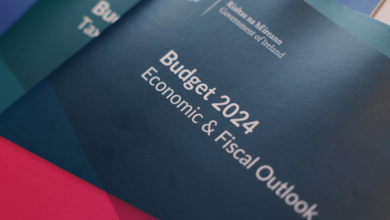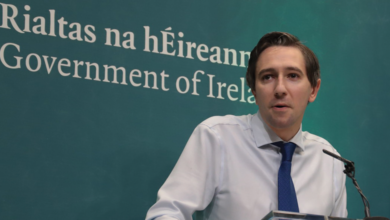Drivers for change in health
 Dr Brian Turner explains why economics and demographics are changing the Health Service and suggests that government targets may be too ambitious to be delivered.
Dr Brian Turner explains why economics and demographics are changing the Health Service and suggests that government targets may be too ambitious to be delivered.
Ireland’s health system, like our economy, is facing significant challenges. Some of these are outside our control, but nonetheless, these challenges need to be managed. Furthermore, the Government is committed to implementing the most ambitious and wide-ranging reforms of the health system in the history of the State. These reforms would be challenging even in benign economic times, but are made all the more challenging in the current climate. So in what sort of state is the Irish health system, what are the existing challenges, and what additional challenges will the reforms pose?
Ireland’s health budget has been cut sharply in recent years. OECD figures show that, between 2009 and 2010, total health spending per capita in Ireland fell by 7.9 per cent, the sharpest decline in the EU, following average growth of 6.5 per cent per annum between 2000 and 2009 (the fifth fastest growth rate). This fall was largely driven by the reduction in government expenditure on health.
Despite this, health spending per capita in Ireland in US$ purchasing power parity terms was $3,718, compared with an OECD average of $3,268. As a percentage of GDP, Ireland spent 9.2 per cent on health in 2010, just below the OECD average of 9.5 per cent (although many people argue that measuring spending as a proportion of GNP would be more accurate for Ireland).
On the face of it, it might appear that, despite the recent cut in expenditure, our health system is reasonably well financed. However, Ireland’s health system was relatively underfunded for over a decade from the mid-1980s and, despite increased expenditure in the last decade, this underfunding was not fully unwound. Any comparisons of Ireland’s health system with international benchmarks need to bear this historical context in mind, and expectations should be adjusted accordingly.
Challenges
This reduction in the health budget comes against a backdrop of significant challenges for health systems globally, not just in Ireland. Notwithstanding the recent reversal, health spending (per capita and as a percentage of GDP) has been on a long-term upward trend for decades, prompting debates regarding sustainability in a number of countries. There are a number of reasons for this upward trend.
One of these is that populations, including Ireland’s, are ageing. Since older people have higher average medical expenses than younger people, this has implications for health system spending. Evidence shows that, in 2009, the top 1 per cent of the US population by health spending accounted for approximately 20 per cent of spending, while the bottom 50 per cent of the population only accounted for 3 per cent of spending, and that those in the high-spending category tended to be older and more likely to have chronic conditions than the average. Irish evidence also suggests that older people have above average hospital and GP utilisation.
Another issue is that more people are suffering with chronic illness, and with the obesity epidemic predicted to worsen, this is likely to continue. A further factor driving higher health spending is the on-going improvement in medical technology and treatments. While these are more effective, they also cost more, as evidenced by recent high-profile decisions on cost-effectiveness.
Adding to these challenges in Ireland is the fact that, as its budget is being cut, the number of people relying on the public health system is increasing. The number of people with medical cards or GP visit cards has increased by around 50 per cent since 2006, and evidence suggests that those with medical cards are more likely to visit the GP and visit more frequently than those without these cards.
Furthermore, the number of people with private health insurance has fallen by approximately 8 per cent since the end of 2008, meaning that fewer people have the option of private treatment and must therefore rely on the public hospital system. With continued premium increases, and the prospect of charges for the use of public beds in public hospitals being introduced later this year (which will add further upward pressure to premiums), the fall in the number with insurance is likely to continue.
Another factor that may yet manifest itself is the effect of economic conditions on people’s health. A 2012 report showed that over three quarters of British GPs surveyed felt that austerity had had a negative impact on their patients’ health – with mental health issues and alcohol abuse being of particular concern. It is quite likely that austerity in Ireland is having similar effects on the health of the population.
In order to manage these challenges, significant shifts in the delivery of healthcare will be needed. Much progress has already been made on shifting from inpatient to day-case treatment in hospitals, but more needs to be done to shift from hospital treatment to primary and community settings.
In the midst of these challenges, the Government is planning the most radical health system reforms in the history of the State. Their proposals include shortening waiting times, introducing free-at-the-point-of-use GP care for all, implementing a money-follows-the-patient (MFTP) reimbursement system and moving to universal health insurance (UHI): all by 2016. These reform proposals involve significant additional challenges.
In order for these proposals to provide a better health system, increased capacity will be needed, particularly for GPs but also for hospital services. However, Future Health envisages further contractions in HSE staffing over the coming years. New contracts will need to be negotiated with GPs and consultants, but based on previous experience these negotiations may not be straightforward. Investment will also be needed in information systems in order for MFTP to work.
Paying for all of this will also be challenging. Pre-election estimates put the cost of providing free-at-the-point-of-use GP care for all at €389 million. The plans suggested that this money would be found through savings elsewhere, but as the Government is discovering, savings are often more difficult to achieve than might first appear.
The introduction of UHI could also entail higher costs. This is highlighted by the Dutch experience, where per capita health spending has increased rapidly since similar reforms were introduced there in 2006. Given that the plans envisage the State paying premiums on behalf of those on lower incomes and subsidising them for those on middle incomes, recent trends in health insurance inflation, if continued under UHI, would mean additional costs to the State on an on-going basis.
Past experience suggests that reliance on competition to keep costs down does not necessarily work. UHI premiums are also likely to represent an additional financial burden for those who currently do not have health insurance and whose premiums will not be paid for by the State.
The Irish health system is currently facing significant challenges, with increasing demands on the public system at a time when its budget is being cut. Maintaining service levels in these circumstances will require efficiency improvements and changes in how care is delivered. The Government’s reform proposals, meanwhile, are looking ever more ambitious and unlikely to be delivered in the timescale envisaged. It remains to be seen to what extent they will be implemented before another election is upon us.
Dr Brian Turner is a lecturer in economics at University College Cork with a particular interest in health and insurance issues.






